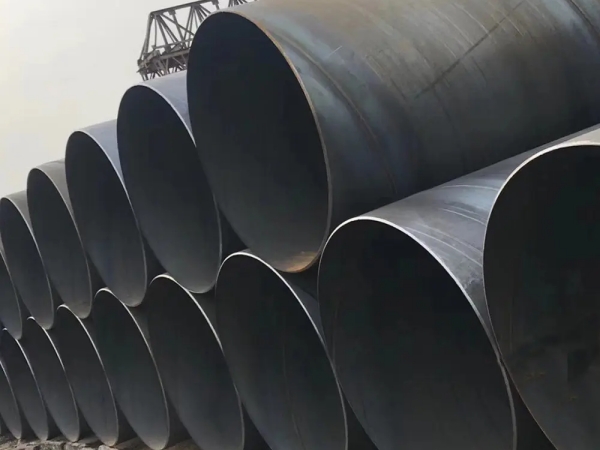The technology and methods for welding Spiral Submerged Arc Welded (SSAW) steel pipes are critical to ensuring the quality and integrity of the final product. Here's a refined explanation of the process and considerations.
Surface Quality and Defect Management:
- SSAW steel pipes must have clean inner and outer surfaces, free from any residual acid, oxide scale, or surface defects such as cracks, inclusions, scarring, delamination, concave welds, and incomplete fusion.
- Any surface imperfections should be rectified by grinding to achieve a smooth transition with the base material, without reducing the wall thickness below the minimum specified in the relevant standards.
- If a defect's depth surpasses the minimum allowable wall thickness, it may be permissible to conduct welding repairs with the customer's approval, adhering strictly to the welding materials and processes outlined in the specified guidelines.
- Post-repair, the weld area must be inspected and verified according to the stipulated quality control procedures.
Weld Bead Specifications:
- The weld beads on both the interior and exterior of SSAW pipes should be level with the pipe surface or uniformly convex.
- The weld reinforcement must adhere to specific dimensions:
On the outer side, it should not exceed 50% of the wall thickness or 3mm, whichever is less.
On the inner side, it should not exceed 25% of the wall thickness or 3mm, with the smaller value being the limit.
- The weld surface must be smooth and free from irregularities, ensuring a seamless transition between the weld and the base metal without any concave areas.
Welding Technology and Application:
Different applications, equipment, pipelines, structural components, and environmental conditions necessitate varied welding technology requirements based on the medium contained and the pressure levels involved.
Welding Technical Proficiency and Safety:
It is essential to understand the fundamentals of welding, including its definition, types, benefits, and limitations.
Knowledge of safety protocols is vital to prevent accidents such as electric shocks and to safeguard against fire, explosions, poisoning, and radiation hazards, especially in special environments.
Recognizing the significance of safe welding practices and the importance of labor protection measures in welding is crucial.
Familiarity with the evolution and global applications of welding technology is beneficial for staying updated with industry advancements.
Scope of Welding Technology:
- Welding Methods: These can vary based on the environment in which they are conducted, such as: A. Protected state welding B. Unprotected state welding C. Vacuum state welding D. Underwater welding, among others.
- Welding Equipment: The range of equipment used includes: A. Arc welding machines B. Resistance welding machines C. Spot welding machines D. Forge welding machines E. Explosion welding machines F. Bimetallic composite diffusion (metallurgical) welding machines, etc.
- Welding Control: Advanced control systems are employed for precision and consistency in welding processes, such as: A. Automatic welding control B. Computer-aided welding control C. Profile-specific welding control

By adhering to these detailed guidelines and understanding the nuances of welding technology, SSAW steel pipes can be reliably manufactured and maintained to serve their intended applications effectively.